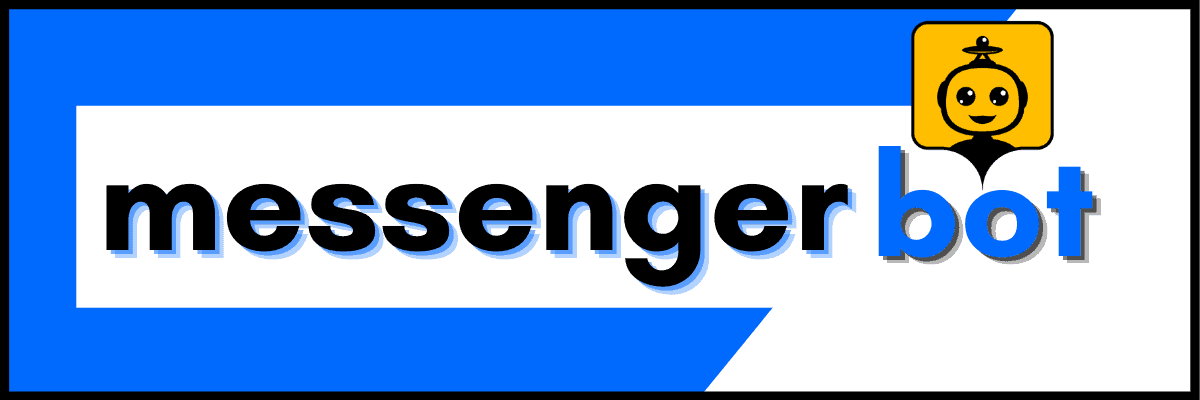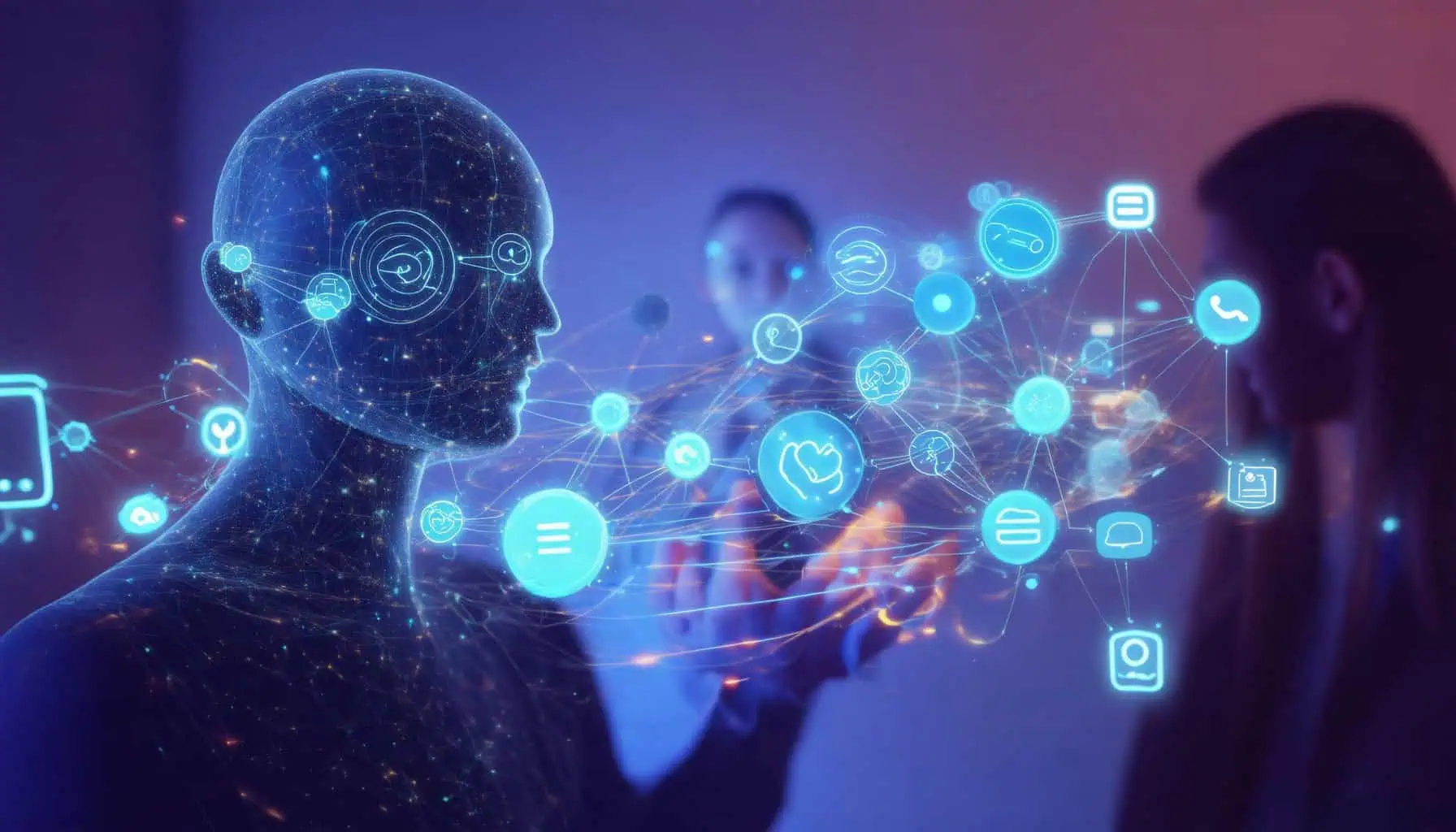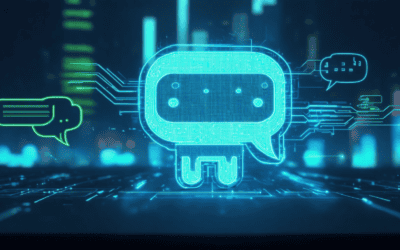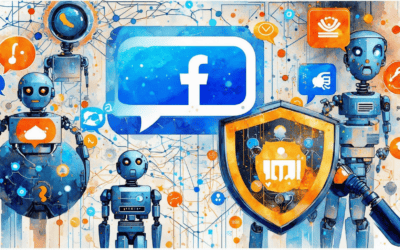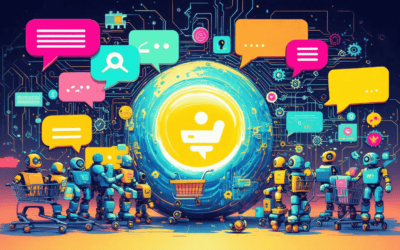Key Takeaways
- Understanding chatbot intents is essential for developing effective customer service chatbots that enhance user interactions.
- There are four main types of chatbot intents: Informational, Transactional, Navigational, and Generative AI, each serving unique functions.
- Utilizing entities alongside intents allows chatbots to deliver precise and context-aware responses, improving overall user satisfaction.
- Implementing best practices like user-centric design and continuous learning is crucial for optimizing chatbot performance.
- Regular testing and updates of intents based on user feedback help maintain the relevance and accuracy of chatbot interactions.
In the rapidly evolving landscape of digital communication, chatbot intents play a pivotal role in shaping effective customer interactions. Understanding the nuances of these intents is essential for businesses aiming to enhance their customer service chatbots and streamline communication. This article delves into the various types of chatbot intents, their functions, and the best practices for creating impactful customer service experiences. We will explore the fundamental question, what are intents in chatbot?, and discuss the four main types of chatbots, highlighting the differences between chatbots and conversational AI. Additionally, we will clarify the relationship between intents and entities in natural language processing (NLP), address the phenomenon of chatbot hallucination, and provide actionable insights on how to create effective intents. By the end of this article, you will have a comprehensive understanding of chatbot intents and their critical role in the realm of AI customer service chatbots.
What are intents in chatbot?
Intents in chatbots are fundamental components that enable these AI systems to interpret and respond to user inquiries effectively. Understanding intents is crucial for developing a chatbot that can provide relevant and accurate responses. Here’s a detailed breakdown of intents and their significance:
Understanding the Role of Chatbot Intents
1. Definition of Intents: Intents represent the underlying purpose or goal behind a user’s input. For example, if a user types “Book a flight,” the intent is to initiate a flight booking process. Identifying this intent allows the chatbot to respond appropriately.
2. Role of Entities: While intents define the user’s goal, entities provide specific details that further clarify the input. In the flight booking example, entities might include the departure city, destination, travel dates, and passenger details. Together, intents and entities enable a chatbot to understand context and deliver precise responses.
3. Types of Intents:
- Informational Intents: Users seek information (e.g., “What are the store hours?”).
- Transactional Intents: Users want to perform an action (e.g., “Order a pizza”).
- Navigational Intents: Users are looking for directions or assistance in navigating a service (e.g., “Help me find my account settings”).
Importance of Chatbot Intents in Customer Service
Accurately defining intents is essential for creating a seamless user experience. A well-trained chatbot can handle various user inputs, reducing frustration and improving engagement. According to a study by Gartner, chatbots can handle up to 80% of routine customer inquiries, showcasing their effectiveness when intents are properly identified.
Best practices for implementing intents include:
- User-Centric Design: Understand your audience and their common queries to define intents accurately.
- Continuous Learning: Implement machine learning algorithms that allow the chatbot to learn from interactions and refine its understanding of intents over time.
- Testing and Optimization: Regularly test the chatbot’s performance in recognizing intents and adjust as necessary to improve accuracy.
Many chatbot frameworks, including Messenger Bot, utilize intents to enhance user interactions. By leveraging intents, these platforms can provide tailored responses that meet user needs effectively.
In conclusion, intents are critical for the functionality of chatbots, allowing them to interpret user goals and respond with relevant information. By focusing on intent recognition and incorporating entities, developers can create more effective and user-friendly chatbots, ultimately leading to improved customer satisfaction and engagement.
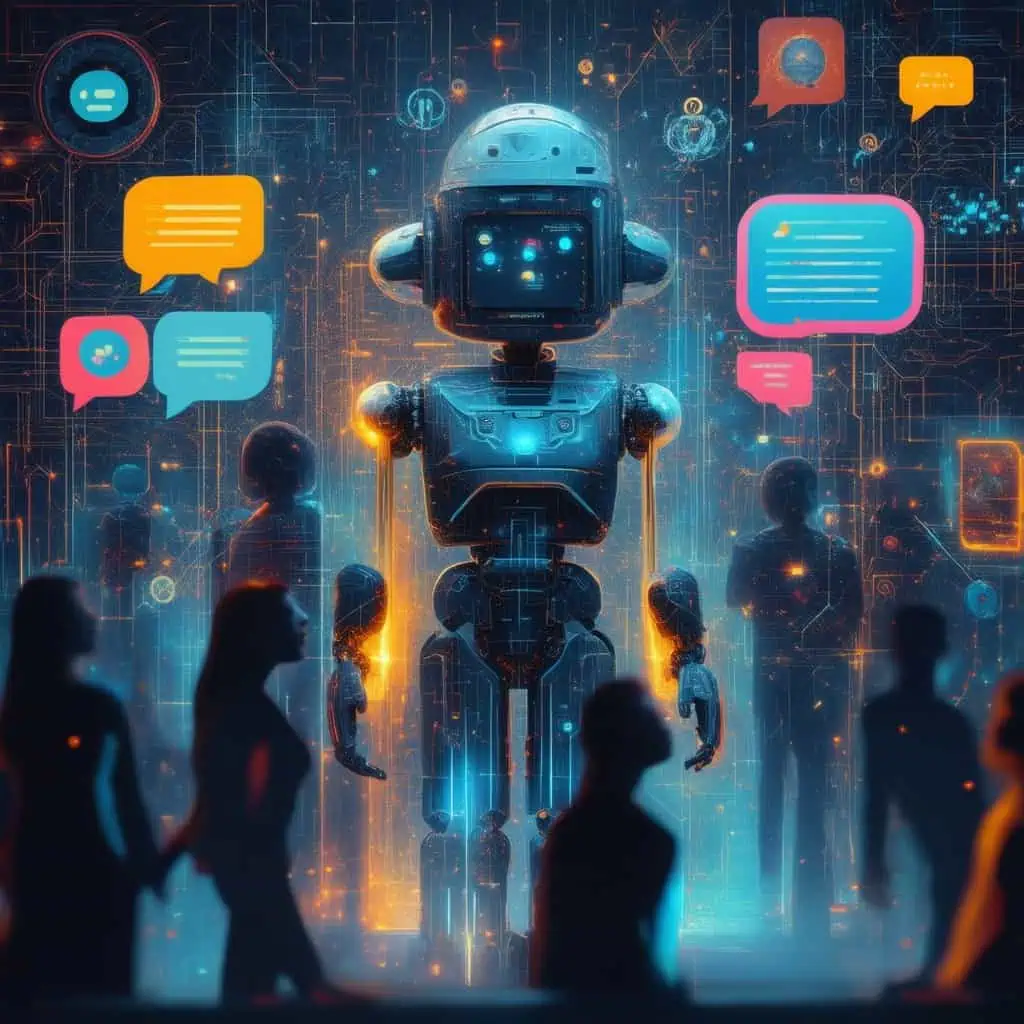
What are the 4 types of chatbots?
Understanding the different types of chatbots is crucial for businesses looking to enhance their customer interactions. Each type serves unique purposes and functionalities, catering to various user needs. Here are the four primary types of chatbots:
Exploring Different Types of Chatbots
1. Menu or Button-Based Chatbots: These are the simplest form of chatbots, allowing users to interact through predefined menus or buttons. They guide users through a series of options, making it easy for them to find information or complete tasks without needing to type.
2. Rule-Based Chatbots: Also known as decision-tree chatbots, these operate based on a set of predefined rules. They can handle specific queries by following a scripted flow, responding accurately to user inputs that match their programmed rules. However, they may struggle with unexpected questions or complex interactions.
3. AI-Powered Chatbots: Utilizing natural language processing (NLP) and machine learning, AI-powered chatbots can understand and respond to user inquiries more dynamically. They learn from interactions, improving their responses over time. This type includes advanced systems like virtual assistants, which can engage in more human-like conversations.
4. Voice Chatbots: These chatbots are designed to interact with users through voice commands. They leverage speech recognition technology to understand spoken language, making them ideal for hands-free applications. Voice chatbots are commonly used in smart devices and virtual assistants, enhancing user experience through auditory interaction.
5. Generative AI Chatbots: A newer category, these chatbots use advanced AI models to generate responses based on context rather than relying solely on predefined scripts. They can create more nuanced and relevant answers, making them suitable for complex queries.
6. Hybrid Chatbots: Combining elements of both rule-based and AI-powered chatbots, hybrid chatbots can switch between scripted responses and AI-driven interactions. This flexibility allows them to handle a wider range of inquiries effectively.
For further reading on chatbot technologies and their applications, refer to sources such as IBM chatbots overview and Salesforce chatbot solutions.
Chatbot vs Conversational AI: Key Differences
When discussing chatbot technologies, it’s essential to differentiate between chatbots and conversational AI. While both aim to facilitate communication, they operate on different levels of complexity and functionality.
Chatbots are primarily rule-based or scripted systems designed to handle specific tasks or queries. They follow predefined paths and are limited in their ability to understand context or nuance. In contrast, Conversational AI encompasses a broader range of technologies that utilize machine learning and NLP to engage in more natural, human-like conversations. This includes AI-powered chatbots that can learn from interactions and adapt their responses accordingly.
Understanding these differences can help businesses choose the right solution for their customer service needs. For more insights into AI chatbot uses and applications, check out AI chatbot uses and applications.
What are Intents and Entities?
Intents and entities are crucial components in natural language processing (NLP) and chatbot development. Understanding these concepts enhances the effectiveness of conversational agents, such as Messenger Bots, in delivering accurate and relevant responses.
Defining Intents and Entities in NLP
Intents: An intent represents the user’s purpose or goal when interacting with a chatbot. It encapsulates what the user wants to achieve, such as booking a flight, checking the weather, or seeking customer support. For instance, if a user types “I want to book a flight to New York,” the intent is clearly to initiate a flight booking process.
Entities: Entities provide additional context to the user’s intent by identifying specific details related to the action. In the previous example, entities would include “flight” (the type of action) and “New York” (the destination). Entities can be categorized into various types, such as dates, locations, quantities, and more, which help refine the intent and allow for more precise responses.
The Relationship Between Chatbot Intents and Entities
By accurately identifying intents and entities, chatbots can deliver personalized and context-aware interactions. This capability significantly enhances user experience and satisfaction. For example, a Messenger Bot that understands both the intent to book a flight and the specific destination can streamline the booking process, reducing user effort and time.
Recent trends show that the integration of machine learning and AI has advanced the recognition of intents and entities, allowing chatbots to learn from user interactions and improve over time. Techniques such as natural language understanding (NLU) and deep learning models are increasingly being employed to enhance the accuracy of intent and entity recognition.
For further reading on intents and entities in chatbots, refer to the following authoritative sources: IBM chatbots overview and Salesforce chatbot solutions.
Why Do Chatbots Hallucinate?
Chatbot hallucination is a critical issue that affects the reliability and effectiveness of customer service chatbots. Understanding the reasons behind this phenomenon is essential for developers and businesses aiming to enhance their AI chatbot for customer service solutions. Hallucination occurs when a chatbot generates responses that seem plausible but are factually incorrect. This can lead to confusion and mistrust among users, undermining the overall user experience.
Understanding Chatbot Hallucination
Chatbot hallucinations can be attributed to several factors:
- AI Overview: Chatbots, especially those powered by large language models (LLMs), can produce outputs that appear credible yet are factually inaccurate. This phenomenon is commonly referred to as “hallucination.”
- Training Data Limitations: LLMs are trained on vast datasets that may contain inaccuracies or biases. If the training data is outdated or lacks comprehensive coverage of a topic, the model may generate erroneous responses. Research indicates that the quality and diversity of training data significantly influence the reliability of AI outputs.
- Pattern Recognition and Generalization: While LLMs excel at recognizing patterns in language, they lack true comprehension. This can lead to inappropriate generalizations, where the model incorrectly associates similar-sounding words or phrases without understanding their contextual differences.
- Lack of Context and Real-World Understanding: LLMs often struggle to grasp the nuances of human language and the specific context of queries. This can result in outputs that seem credible but are ultimately misleading.
- Decoding and Generation Strategies: The methods used for text generation, such as sampling strategies that prioritize novelty, can contribute to hallucinations. These strategies may lead to the creation of unusual or incorrect outputs that do not align with factual data.
- Overconfidence: LLMs can exhibit overconfidence in their responses, presenting incorrect information with an authoritative tone. This can mislead users into believing the generated content is accurate, even when it is not.
Factors Contributing to Chatbot Hallucination
Several factors contribute to the occurrence of hallucinations in chatbots:
- Examples of Hallucinations: Instances of hallucinations can include false claims about events, fabricated quotes, or the generation of fictitious entities. For example, a chatbot might assert that a historical event occurred when it did not, or create a list of imaginary names and addresses.
- Addressing Hallucinations: Ongoing research aims to mitigate hallucinations by enhancing the quality of training data, refining decoding strategies, and developing models that better recognize their limitations. User feedback and validation processes are also crucial for identifying and correcting inaccuracies.
By understanding these factors, developers can work towards creating more reliable customer service AI chatbots that minimize the occurrence of hallucinations, ultimately improving user trust and experience. For more insights on enhancing chatbot performance, explore our guide on maximizing the benefits of chatbots in customer service.

What are intents used for?
Chatbot intents play a crucial role in enhancing the functionality of customer service chatbots. By defining specific user goals, intents enable chatbots to understand and respond accurately to user inquiries. This understanding is essential for delivering effective customer service, as it allows the chatbot to provide relevant information and assistance based on the user’s needs.
Applications of Chatbot Intents in Customer Service
Chatbot intents are utilized in various applications within customer service, significantly improving user experience and operational efficiency. Here are some key applications:
- Automated Customer Support: Customer service chatbots leverage intents to automate responses to frequently asked questions, reducing the workload on human agents. For instance, an AI customer service chatbot can handle inquiries about order status, return policies, and product information.
- Lead Generation: By identifying user intents related to product interest, chatbots can engage potential customers effectively. For example, if a user expresses interest in a specific product, the chatbot can provide tailored recommendations or initiate a conversation about purchasing options.
- Feedback Collection: Chatbots can use intents to gather customer feedback on services or products. This information is invaluable for businesses looking to improve their offerings and customer satisfaction.
- Personalized Recommendations: By analyzing user intents, chatbots can offer personalized suggestions based on previous interactions, enhancing the overall customer experience.
Chatbot Intent Classification: Best Practices
Effective classification of chatbot intents is vital for ensuring accurate responses and improving user engagement. Here are some best practices for classifying chatbot intents:
- Define Clear Intents: Clearly define each intent based on user goals. This clarity helps in training the chatbot to recognize and respond appropriately to various user inputs.
- Utilize Training Data: Use diverse training data that reflects real user interactions. This approach enhances the chatbot’s ability to understand different ways users may express the same intent.
- Regularly Update Intents: Continuously monitor and update intents based on user feedback and changing business needs. This practice ensures that the chatbot remains relevant and effective over time.
- Implement Contextual Understanding: Incorporate contextual understanding into intent classification. This allows the chatbot to consider previous interactions and provide more accurate responses.
By following these best practices, businesses can optimize their customer service chat bot performance, leading to improved customer satisfaction and engagement.
How do you create intents?
Creating effective chatbot intents is crucial for enhancing user interactions and ensuring that customer service chatbots can respond accurately to user inquiries. Here’s a detailed guide on the steps involved in creating chatbot intents.
Steps to Create Effective Chatbot Intents
1. **Identify User Needs**: Start by understanding the common questions and requests your users have. This can be achieved through analyzing previous interactions or conducting surveys. Knowing what users typically ask helps in defining relevant intents.
2. **Define Intents Clearly**: Each intent should represent a specific user goal. For example, if users frequently ask about order status, create an intent named “Check Order Status.” This clarity helps the chatbot understand and respond appropriately.
3. **Create Sample Utterances**: For each intent, develop a list of sample utterances that users might say. This includes variations in phrasing, such as “Where is my order?” or “Track my shipment.” The more diverse the examples, the better the chatbot can recognize user input.
4. **Incorporate Entities**: Identify any entities that are relevant to the intents. For instance, if the intent is about checking order status, entities might include order numbers or product names. This allows the chatbot to extract specific information from user queries.
5. **Test and Iterate**: After creating intents, conduct testing to see how well the chatbot understands and responds to user inputs. Gather feedback and refine the intents based on user interactions to improve accuracy and effectiveness.
6. **Utilize Analytics**: Implement analytics to monitor how users interact with the chatbot. This data can provide insights into which intents are performing well and which may need adjustments.
By following these steps, you can create chatbot intents that enhance the functionality of customer service chatbots, ensuring they meet user needs effectively.
Utilizing Free Chatbot Intents and Datasets
To streamline the process of creating chatbot intents, consider utilizing free chatbot intents and datasets available online. These resources can provide a solid foundation for your chatbot’s functionality. Here are some options:
1. **Open-Source Datasets**: Platforms like GitHub offer various open-source datasets that include predefined intents and utterances. These can serve as a starting point for your chatbot, allowing you to customize them according to your specific needs.
2. **AI Chatbot Platforms**: Many AI chatbot platforms, such as [Brain Pod AI](https://brainpod.ai), provide pre-built intents that can be easily integrated into your chatbot. These platforms often come with templates that simplify the process of setting up intents for customer service chatbots.
3. **Community Contributions**: Engage with online communities and forums where developers share their chatbot intents. This collaborative approach can help you discover effective intents that have been tested and refined by others.
4. **Trial and Error**: Don’t hesitate to experiment with different intents and datasets. The iterative process of testing and refining will lead to a more robust chatbot that effectively meets user expectations.
By leveraging these resources, you can enhance your chatbot’s capabilities, making it a valuable tool for customer service interactions.
Chatbot Intent Examples and Best Practices
Understanding chatbot intents is crucial for developing effective customer service chatbots. By analyzing various chatbot intent examples, we can gain insights into how to structure interactions that enhance user experience and streamline communication. Here, we will explore practical examples of chatbot intents and best practices for implementation.
Analyzing Chatbot Intents List and Examples
Chatbot intents are designed to capture the user’s purpose behind their inquiries. Here are some common chatbot intent examples:
- Greeting Intent: This intent is triggered when a user initiates a conversation. For example, a chatbot might respond with “Hello! How can I assist you today?”
- Order Status Intent: Users often want to check the status of their orders. A well-defined intent can handle queries like “Where is my order?” and provide real-time updates.
- Product Inquiry Intent: This intent addresses questions about specific products, such as “What are the features of Product X?”
- Support Request Intent: When users need help, this intent can guide them through troubleshooting steps or escalate the issue to a human agent.
Implementing these intents effectively requires a clear understanding of user needs and the context of their inquiries. By categorizing intents, businesses can create more responsive and intuitive AI customer support chatbots.
AI Customer Support Chatbot: Enhancing Customer Interactions
To maximize the effectiveness of your AI customer service chatbot, consider the following best practices:
- Define Clear Intents: Clearly outline what each intent should accomplish. This clarity helps in training the chatbot to respond accurately.
- Utilize Contextual Understanding: Incorporate context into your chatbot’s responses. For instance, if a user asks about a product after receiving a greeting, the chatbot should recognize this context and provide relevant information.
- Regularly Update Intents: As customer needs evolve, so should your chatbot intents. Regularly review and update them based on user interactions and feedback.
- Test and Optimize: Continuously test your chatbot’s performance. Use analytics to identify areas for improvement and optimize intents accordingly.
By following these best practices, you can enhance the interactions facilitated by your customer service chatbot, ensuring that it meets user expectations and provides valuable assistance. For more insights on leveraging chatbots in customer service, check out our article on maximizing the benefits of chatbots in customer service.
